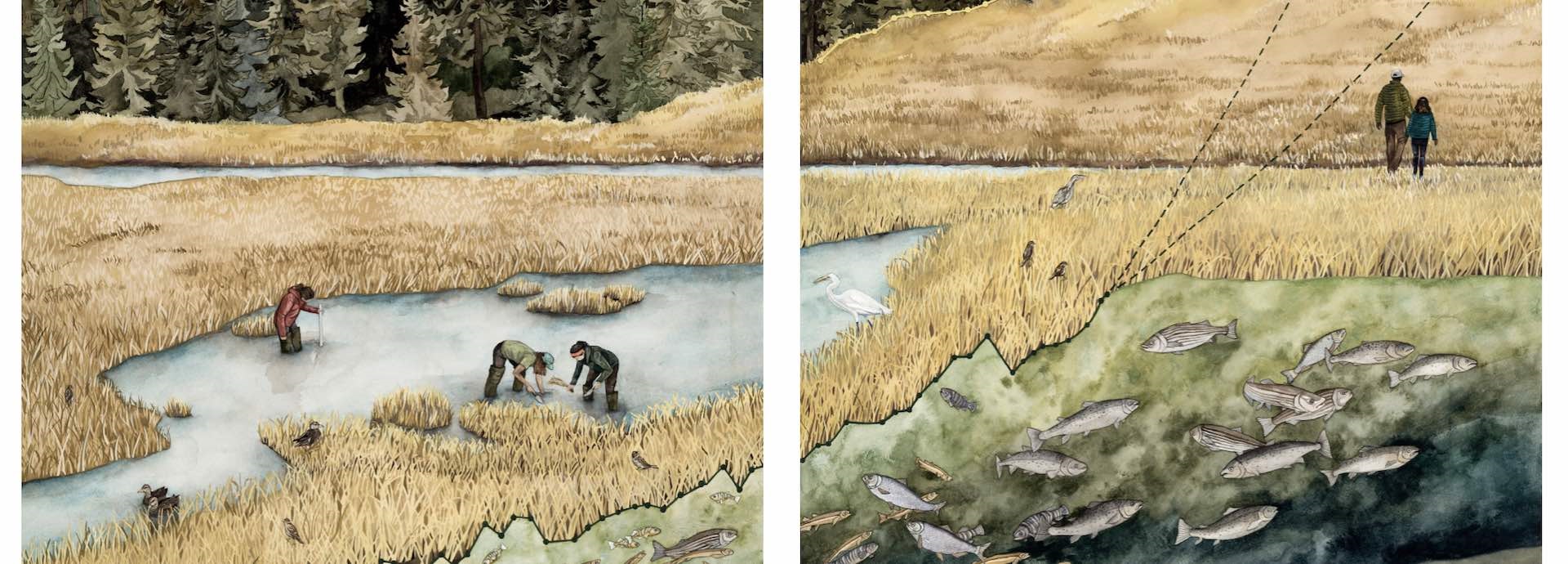

A 137-foot wave rushes forward, ready to engulf everything in its path. At the very last minute, the water hits an invisible glass wall, changing its course and humankind is saved from disaster, yet again. Such is the latest installation from Argentine mixed media artist Luciana Abait, who since the early 2000s has incorporated messages about the human impact on the environment into her work.
“The Glass Wall,” and her recent exhibition series “Agua” are not just a commentary on the effects of climate change. Abait hopes the dramatic water projections will reconnect the viewer with the element. “I talk about how sacred water is, making people reflect that maybe in the future waterfalls might only exist in a virtual manner if we continue on this path,” she explains.

Luciana Abait's installation titled 'The Glass Wall'. Image credit: Luciana Abait
The power of art
Abait is not alone in making socially conscious art to highlight a subject that often invokes feelings of doom and gloom. Artists like Danish-Icelandic Olafur Eliasson, Chinese Tan Zi Xi and British John Akomfrah have all made a name for themselves exploring the often-detrimental interconnectivity between humans and nature. The tension between earth and its inhabitants is also a subject for American artist and scientist Jill Pelto, who incorporates environmental statistics into her artwork. A glance at her pieces may show a mountain range or animal migration but look closely and the peaks and curves represent CO2 emissions, rising sea levels and glacier loss.
There's a power to the way that people interact with art and how it can speak to them.
“I often refer to myself as a science communicator,” says Pelto, the daughter of a glaciologist who witnessed the effects of climate change firsthand. “There's a power to the way that people interact with art and how it can speak to them.” Pelto accompanies her work with additional information but understands that not everyone is there for the statistics.
“They might not notice the graph, but if they see what the topic is they can look at the piece again and take away even more from it.”

Image credit: Jill Pelto
Reaching the masses
In 2020, Pelto created a piece for Time Magazine, a cover image titled “Currents,” highlighting the effects of climate change while offering some less dire projections.
“It had sea level rise, air temperature, and our use of fossil fuels, but also how renewable energy was increasing and the slight decrease in our consumption of fossil fuels during COVID when the world slowed down,” she explains.
What Pelto wanted to convey through her image was that if everyone acted together, globally, we could bring down our consumption of fossil fuels fast. “I hope it inspired people to reflect on what to do within their communities, what they do in their lives and how they vote,” says Pelto. The cover allowed Pelto to reach critical mass, outside of the traditional gallery structure.
Abait too finds her work has the greatest impact through a similar approach. “This way, art breaks barriers of race and socio-economical classes,” she says. “The biggest reward is when people who are not really art experts stop whatever they are doing and think about what's going on in the art that is being presented.”

Image credit: Luciana Abait
A letter to the future
For Abait, whose recent exhibit “A Letter to the Future” showcased icebergs in utopian, or perhaps dystopian, environments, it is important that her work imbues a sense of hope despite their apocalyptic vibe.
“A scientist on a panel I was on recently said that if they tell the population that everything is lost and, regardless of what we do, nothing will change, people will give up. But it is proven that if you tell them there's still a chance to fight, people will do their best to make a change,” says Abait.
It is proven that if you tell people there's still a chance to fight, they will do their best to make a change.
“That's when all that I do made sense. In my work, there's an underlying theme about humans invading nature, but at the same time, through these beautiful landscapes, viewers can rediscover the beauty around them, which transmits hope,” she adds.
Pelto has also, of late, been searching for a way to incorporate more optimism into her work. “A lot of the actual actions around climate change do not have data connected to them,” she says. “I have used data about voting in the United States and the percentage of adults who are voting for environmental protection. It's good to see, but I think the most hope I'm getting is through seeing actions that individuals and nonprofits are taking. I want to find ways to show that visually in my art, but I need to be more creative with that.”


